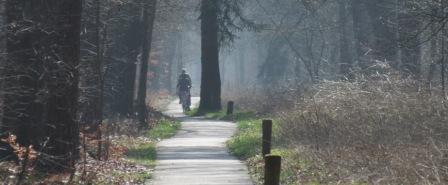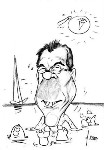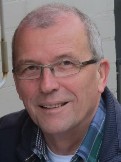Acknowledgements
The person who made MPEG happen is Leonardo Chiariglione; he was the driving force behind its establishment, and he remained the driving force. Leonardo is the only person who attended all MPEG meetings, meanwhile more than a hundred. He speaks many languages, including Japanese, and has an amazing capability to move MPEG experts forward in the right direction. Leonardo's vision and perseverance made MPEG a team that works already for more than 25 years on digital audio and video compression standards, or in more general terms, for digital media. Thousands of experts from over 25 countries and more than 300 companies participated in the joint effort to consolidate company research results in MPEG standards. This collaboration proved extremely efficient and productive, which applies from the television and movie industry's perspective, particularly for digital video and audio standards. The dedication of Leonardo Chiariglione to MPEG brought major benefits to the audio-visual industry and deserves the highest respect from everyone with a stake in digital video and audio.
MPEG-2 systems became a reality through a joint effort of many excellent experts from industries all over the world, working together to create the best possible standard. When, for example, major company interests were involved, the discussions became sometimes heated but were always driven by technology and remained thereby productive, with a remarkably high group comradeship. All participants should be proud of their contributions and of being part of this group. Working within a mix of company-political interests and technical arguments has been a great pleasure that all participants should be acknowledged for.
Unfortunately, it is impossible to acknowledge each person in MPEG who played an important role in developing MPEG-2 systems. Nevertheless, with apologies to the people I forgot to mention, I would like to mention the following MPEG system key people:
- Sandy MacInnis – chair of the MPEG systems group during the development of MPEG-1 and MPEG-2 systems. Brilliant person, both technically and as a chair. Acted as "MPEG system conscience" by keeping track of both the "big picture" and the details. His perfectionism and critical stance fuelled his strong desire for himself and others to be accurate.
- Bernard Szabo – just another technically brilliant person; also very persistent; wrote history by continuing to actively attend a critical physical MPEG-1 systems meeting by phone all day, though he could barely hear the experts present in the meeting room and therefore kept the phone speaker very close to his ear. However, now and then, an opinion expressed by another "participant by phone" came through in a very loud manner, causing his ear to be "blown away". But he did not give up and continued to provide valuable comments.
- Matt Goldman – a highly respected participant. On some occasions, he impressed attendees by lengthy discussions with the chair on the accuracy of his high-level statements.
- Juan Pineda – the initiator and proposer of the mathematical formalism used in the STD model of MPEG systems.
- Gary Logston – the "smart guy in purple", member of the very productive and cooperative Scientific Atlanta team that made many significant contributions to MPEG-2 systems.
- Pete Schirling – during a long period Head of Delegation of the large US National Body in MPEG and editor of the MPEG-2 system specification. During the finalization of the MPEG-2 system standard, the MPEG systems group often continued discussing until very late at night. When concluding the meeting somewhere between 03:00 and 04:00 am, he took care to be awake again to incorporate the preliminary conclusions of the meeting into the next MPEG-2 systems draft. This to ensure that the discussions could be continued efficiently when the group reconvened at 09:00 am.
- John Morris; a brilliant Philips Research colleague and a very nice person. Not only highly respected in the systems, but also in the video group. Played an important role in resolving iDCT accuracy problems in video. He seems to be the source of the NNI joke discussed elsewhere in this book.
- Sam Narasimhan; excellent systems expert and the last of the MPEG-2 System Mohicans. For many MPEG-2 system amendments, Sam and I have worked together pleasantly as co-editors. I also would like to acknowledge Sam for his willingness to help answer questions during this book's writing.
Furthermore, I would like to express my special thanks to Sandy MacInnis for writing the Foreword of this book and Chad Fogg for his contributions throughout this book, particularly for the Epilogue he wrote. I am also grateful to Tom Morrod and Daniel Simmons of IHS for providing the market information used in chapter 18. I want to thank my former Philips Research colleague Jean Gelissen for his willingness to take the role of Dutch Head of Delegation in MPEG and for preparing the statement in the 81 st MPEG meeting on my farewell when retiring from MPEG that made me feel proud:
Farewell
WG11 thanks Jan van der Meer for his longstanding and inspiring participation in the MPEG process and the many contributions to the majority of the MPEG standards. WG11 wishes Jan a very nice, joyful, and exciting next phase in his life after his retirement.
For reviewing and commenting on parts of this book, I want to thank Sandy MacInnis, Ken McCann, Thomas Schierl, and Ellen Mulder, as well as my former Philips colleagues Frans Vreeswijk, Leon van de Kerkhof, Fons Bruls, John Morris, and Wiebe de Haan. Furthermore, I thank Jeff Heynen, Leo Rozendaal, and Vic Teeven for their assistance in finding important information required for this book. And, last but not least, I thank all people with who it was a great pleasure to work with, but who I forgot to mention here…
Finally, in my own family, I am very grateful to Marjolein, Marijke, Wineke, Imke, and Bas, who accepted my regular absence from home, taking the additional burden for granted. And, of course, I thank my entire family for their support and encouragement in writing this book.





